Effect of Enhanced Alcohol through Chaptalization in Virginia Merlot (2020)
Kirsty Harmon
Blenheim Vineyards
Summary
Alcohol concentration in red wines affects microbial stability, palate weight, perception of aromatics, and phenolic extraction. In Virginia, a combination of warm, humid summers and prevalent rainfall during the growing season sometimes leads to lack of sugar accumulation leading to chaptalization. However, the degree of chaptalization is not always clear. A previous study using Virginia Cabernet Sauvignon found that chaptalization of Merlot with up to 50 g/L of sugar led to higher scores for aromatic intensity, fruit intensity, fruit character, and overall ripeness. In this study, chaptalization of Merlot with 44 g/L sugar led to an increase in alcohol from an average of 12% to over 13.5% along with higher heat accumulation, longer active fermentation, and higher extraction of phenolic compounds. Despite these differences, there were no significant sensory differences in the wines in a triangle test.
Introduction
Virginia is an excellent natural grape-growing area in many ways, with winters warm enough to avoid freezing the vines but cool enough to avoid large outbreaks of Pierce’s disease, and a growing season long enough to ripen grapes while still retaining adequate acidity1. However, a combination of warm, humid summers and prevalent rainfall during the growing season sometimes leads to lack of sugar accumulation and the need to pick grapes early. Chaptalization is often employed to increase alcohol levels in the finished wine, however, chaptalization targets are not always clear. How much can a must be chaptalized without becoming unbalanced? Anecdotally, several winemakers have been trained that the limit for chaptalization is two degrees of alcohol while others have been trained 1.5 degrees is the limit (perhaps reflecting their region of training).
Increasing alcohol through chaptalization has several effects on the finished wine. The concentration of alcohol affects the chemical stability of the wine (acting as an antimicrobial agent). The viscosity of alcohol adds weight to the palate1, it volatilizes fruit aromas1, augments the production of glycerol, succinic acid, and esters2. Previous work by Sherman et al3 tested the effects of ethanol concentration on chemical and sensory properties of wines harvested at three levels of ripeness in Washington State Merlot. In an elegant experimental design, they harvested the same block at three intervals: underripe, ripe, and overripe. For each harvest, they broke the grapes into three treatments and used either chaptalization (to raise the Brix) or saignée and watering back with acidulated water (to lower Brix) so that they could compare chemistry and sensory responses for wines of each harvest interval with each resulting alcohol concentration. They found that there were expected differences in chemistry between wines from different harvest dates, however, adjustments for ethanol “had a greater effect on wine sensory properties than fruit maturity” Specifically, “wines made from ripe (24° Brix) or overripe (28° Brix) fruit adjusted to low ethanol concentrations were described similarly to wines made from unripe fruit” including green and sour, and “wines made from unripe or ripe fruit adjusted to high ethanol concentrations were described similarly to wines made from overripe fruit” including descriptors such as red fruit and floral. They conclude that “wine ethanol concentration is more important for the sensory profiles of wines than is fruit maturity at harvest.”
This concept was tested on Virginia fruit in a WRE experiment by Matthieu Finot of King Family Vineyards conducted in 2019, a fairly warm/ripe year4. He found that chaptalization of Merlot with up to 50 g/L of sugar led to higher scores for aromatic intensity, fruit intensity, fruit character, and overall ripeness. In 2020, the growing season was cooler with several rainfall events associated with hurricane season5. The purpose of this experiment was to determine if chaptalization would increase chemical and sensory measures of ripeness in a cooler, wetter vintage.
Methods
The same methodology was applied to two separate lots of grapes (clone 347 and clone 181) to provide replication. Grapes were hand harvested and chilled overnight then sorted, destemmed and loaded into TBins with the addition of 50 mg/L SO2 (as a KMBS addition). Tbins were inoculated at a rate of 15g/hL of EC1118 yeast the day after processing. Fruit from clone 347 received 1 g/L tartaric acid while fruit from clone 181 received 0.5 g/L tartaric acid (based on the initial fruit chemistry). After three days of fermentation, the treatment lots received sugar additions of 44 g/L while the control lots were not chaptalized. Fermentations were monitored for Brix and temperature each day. Bins were punched down twice daily throughout the fermentation until Brix measured lower than -1.5. Once negative Brix had been reached, free run wine was transferred to matching barrels between treatments. Samples were taken for general chemistry prior to malolactic fermentation, then barrels were inoculated with Scott Labs MBR process (2 g/barrel). Malic acid depletion was monitored every 4 days. SO2 was added as Effergran (56 g/barrel, 100 ppm), 9 days after the completion of malolactic fermentation (malic acid tested less than 0.05 g/L by enzymatic analysis).
Sensory analysis was completed by a panel of 26 wine producers. Due to restrictions put in place during COVID-19, sensory analysis was completed using shipped samples. Each wine producer received three wines in identical bottles, filled on the same day, each coded with random numbers. Two of the bottles contained the same wine while the third bottle contained the different wine. Participants were asked to identify which wine was different (a triangle test). There were four tasting groups with the unique wine in the triangle test balanced among the groups. Participants were then asked to score each wine on a scale of 0 to 10 for color intensity, fruit intensity, body/volume, perception of ripeness, herbaceous/green character, and astringency. They were also given open ended questions to describe the wines. Results for the triangle test were analyzed using a one-tailed Z test. Descriptive scores were analyzed using repeated measures ANOVA.
Results
Both lots of Merlot were harvested at low Brix levels (Table 1). Chaptalization increased the sugar level by approximately 3°Brix each. Fermentation proceeded faster in the unchaptalized lots than the chaptalized lots, with fermentation extended by two days when sugar was added (Figures 1 &2). The chaptalized lots also experienced higher accumulated heat over the course of the fermentation (Figures 1 & 2), though this is likely due to longer fermentation time. Chaptalization led to an increase of 1.4% alcohol in clone 347 and 1.8% in clone 181 (Table 2). Differences in alcohol conversion may be due to overall differences in yeast dynamics, or in difficulties calculating the volume of red must. There were no other large differences in general chemistry between chaptalized and unchaptalized lots. In both replicates, the wine from chaptalized fermentations had higher color intensity (Figure 3). Color can be influenced by pH and SO2 levels, but these were very similar between control and treatments, indicating chaptalization may be the reason for improved color intensity in this case (Table 2, 3, Figure 3). Chaptalized lots also had consistently higher levels of anthocyanins, polymeric anthocyanins, and tannins (Table 4), indicating the addition of alcohol aids in extraction of phenolics.
In a triangle test presenting chaptalized and unchaptalized wines, 10 out of 26 respondents were able to distinguish which wine was different, indicating the wines were not significantly different (Z=0.347, p=0.36). Of the panelists who were able to tell the difference between the wines, the only descriptors with significant or nearly significantly different scores were color intensity, perception of ripeness, and herbaceous/green character (Figure 4, Table 5). Counterintuitively, the unchaptalized wine had higher average scores for fruit intensity and ripeness and lower average score for herbaceous/green character. Though significant, these differences were small. These data should be read with caution, however, as they were generated from only 10 panelists.
Table 1: Fruit chemistry for two lots of chaptalized Merlot (in-house data)

Figure 1: Fermentation kinetics for two treatments of clone 347 Merlot (in-house data)
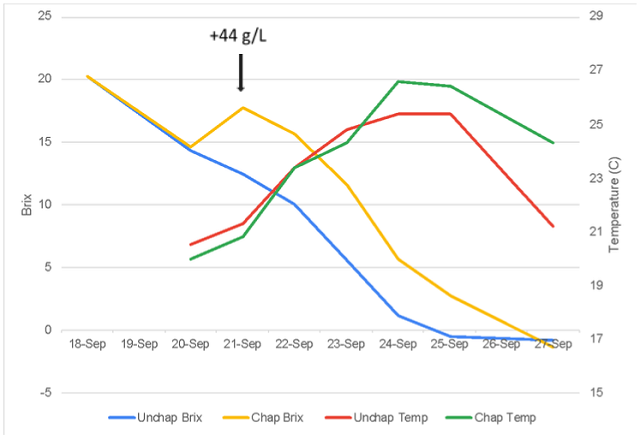
Figure 2: Fermentation kinetics for two treatments of clone 181 Merlot (in-house data)
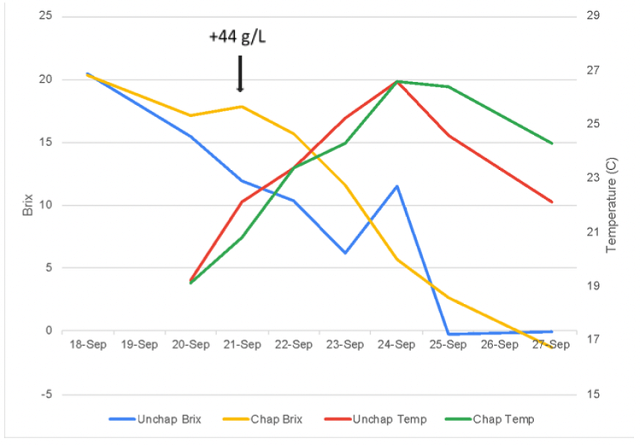
Table 2: General chemistry for two lots of chaptalized Merlot (ICV labs, March 2021)

Table 3: SO2 chemistry for two treatments of Merlot (ICV labs, March 2021)
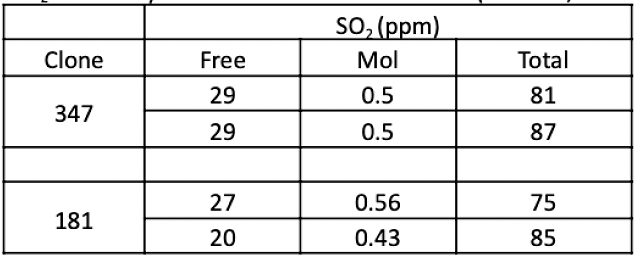
Figure 3: Color intensity for two lots of chaptalized Merlot (ICV labs, March 2021)
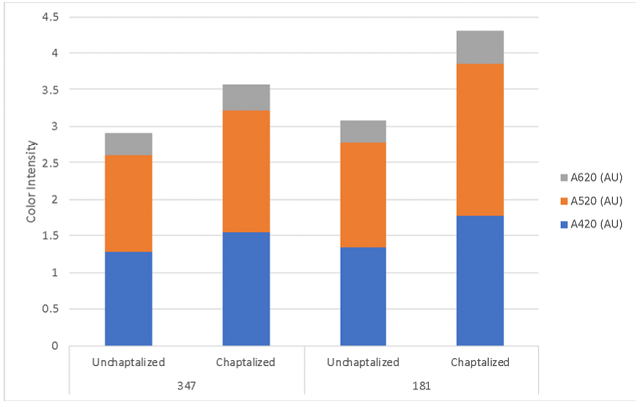
Table 4: Phenolic measurements for two treatments of Merlot (mg/L) (ETS labs March 2021)

Figure 4: Comparison of sensory scores for six descriptors of chaptalized vs. unchaptalized Merlot. Significantly different or nearly significantly different comparisons are labeled with p values from repeated measures ANOVA
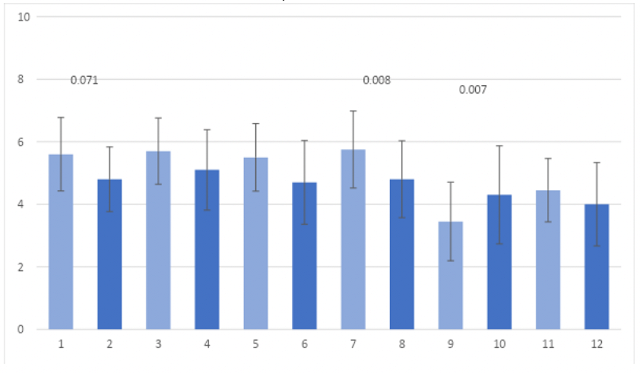
Table 5: Sensory Scores for two chaptalization levels in Merlot (repeated measures ANOVA)
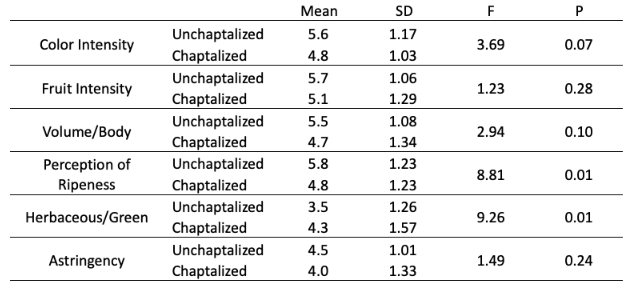
References
(1) Sogg, D. Inside Wine: Chapitalization When Augmenting Alcohol, Wine Spectator, 2003. It’s a Matter of Degree.
(2) Jackson, R. S. Wine Science: Principles and Applications, 4 edition.; Academic Press: Amsterdam, 2014.
(3) Sherman, E.; Greenwood, D. R.; Villas-Boâs, S. G.; Heymann, H.; Harbertson, J. F. Impact of Grape Maturity and Ethanol Concentration on Sensory Properties of Washington State Merlot Wines. Am J Enol Vitic. 2017, 68 (3), 344–356.
(4) SMS Research Advisors. 2019 Virginia Commercial Grape Report. 2020.
(5) SMS Research Advisors. 2020 Virginia Commercial Grape Report. 2021.
